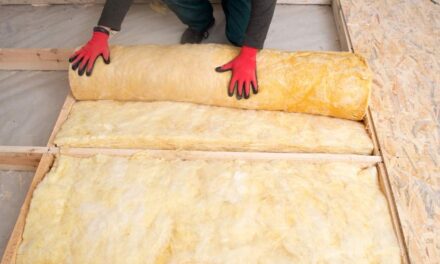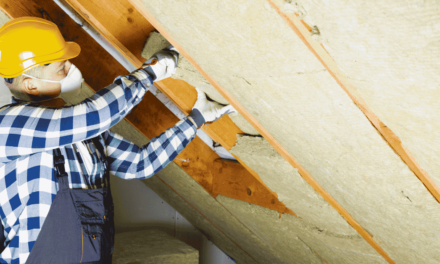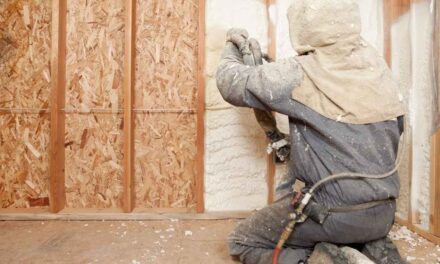Top 5 Signs Your Home Needs Better Insulation– A well-insulated home is essential for maintaining comfort, reducing energy bills, and minimising your carbon footprint. However, many homes in the UK suffer from inadequate insulation, leading to heat loss, higher energy costs, and uncomfortable living conditions. If you’re wondering whether your home could benefit from better insulation, this blog will highlight the top five signs to look out for and provide tips for identifying insulation gaps and inefficiencies.
1. High Energy Bills
One of the most obvious signs that your home needs better insulation is soaring energy bills. If your heating system is working overtime to keep your home warm, it’s likely that heat is escaping through poorly insulated walls, roofs, or floors.
What to Do:
- Compare your energy bills with previous years or similar households. A significant increase could indicate insulation issues.
- Conduct a home energy audit to identify areas where heat is being lost.
2. Uneven Temperatures Throughout the House
Do some rooms feel like a sauna while others are freezing cold? Uneven temperatures are a clear sign of insulation problems. Heat naturally moves from warmer to cooler areas, and without proper insulation, it can escape through walls, windows, and ceilings.
What to Do:
- Check for drafts around windows, doors, and electrical outlets.
- Inspect your loft, walls, and floors for gaps or missing insulation.
- Consider using a thermal imaging camera to detect cold spots in your home.
3. Cold Floors, Walls, or Ceilings
If your floors, walls, or ceilings feel cold to the touch, it’s a sign that heat is escaping and cold air is seeping in. This is especially common in homes with suspended timber floors or uninsulated walls.
What to Do:
- For cold floors, consider underfloor insulation or adding rugs and carpets.
- For cold walls, look into cavity wall insulation or solid wall insulation.
- For cold ceilings, check your loft insulation and ensure it meets the recommended thickness (at least 270mm in the UK).
4. Drafts and Cold Air Leaks
Feeling a draft even when your windows and doors are closed is a telltale sign of poor insulation. Drafts can occur through gaps in windows, doors, floorboards, and even electrical outlets.
What to Do:
- Use a candle or incense stick to locate drafts. Hold it near windows, doors, and other potential gaps—if the flame or smoke wavers, you’ve found a draft.
- Seal gaps with weatherstripping, caulk, or draught excluders.
- Consider upgrading to double or triple-glazed windows for better insulation.
5. Condensation, Damp, and Mould
Condensation on windows, damp patches on walls, or mould growth are signs of poor insulation and inadequate ventilation. When warm air meets cold surfaces, it condenses, leading to moisture buildup and potential damage to your home.
What to Do:
- Improve ventilation by installing extractor fans in kitchens and bathrooms.
- Check your loft insulation to ensure it’s not blocking eaves vents.
- Consider using a dehumidifier to reduce moisture levels in your home.
How to Identify Insulation Gaps and Inefficiencies
1. Inspect Your Loft
Your loft is one of the primary areas where heat can escape. Check the thickness of your loft insulation—if it’s less than 270mm, you may need to add more. Look for gaps around pipes, wires, and the loft hatch, and ensure insulation is evenly distributed.
2. Check Your Walls
Homes in the UK typically have either cavity walls or solid walls. Cavity walls can be filled with insulation, while solid walls may require internal or external insulation. Look for cold spots or damp patches, which could indicate insulation issues.
3. Examine Your Floors
If you have suspended timber floors, check for drafts and cold air coming from below. Consider insulating between the floor joists to reduce heat loss.
4. Assess Your Windows and Doors
Old or poorly fitted windows and doors are a common source of heat loss. Check for gaps around the frames and consider upgrading to energy-efficient models.
5. Use a Thermal Imaging Camera
A thermal imaging camera can help you visualise heat loss in your home. It highlights cold spots and areas where insulation is lacking, making it easier to target improvements.
Conclusion
Better insulation is key to creating a warm, energy-efficient, and comfortable home. If you’ve noticed high energy bills, uneven temperatures, cold surfaces, drafts, or condensation, it’s time to take action. By identifying insulation gaps and addressing inefficiencies, you can reduce heat loss, lower your energy costs, and improve your home’s overall comfort.
In the UK, where winters can be harsh, investing in better insulation is a smart move. Whether you tackle the project yourself or hire a professional, the benefits are well worth the effort. Don’t let the cold get the best of you—take steps today to ensure your home is properly insulated and ready for the seasons ahead.
By addressing these signs and improving your home’s insulation, you’ll not only stay warm but also contribute to a more sustainable future. Stay cosy and energy-efficient all year round!
https://econgn.com/boiler-breakdown-how-eco3-can-help-with-replacements/





